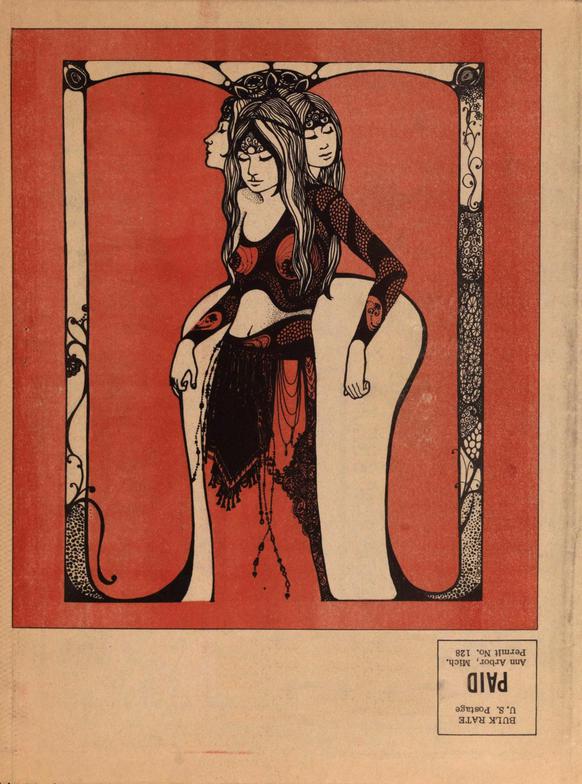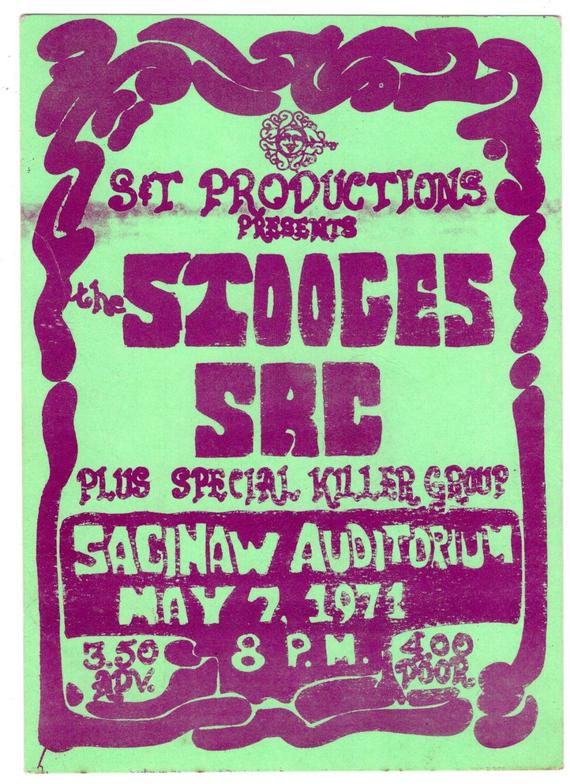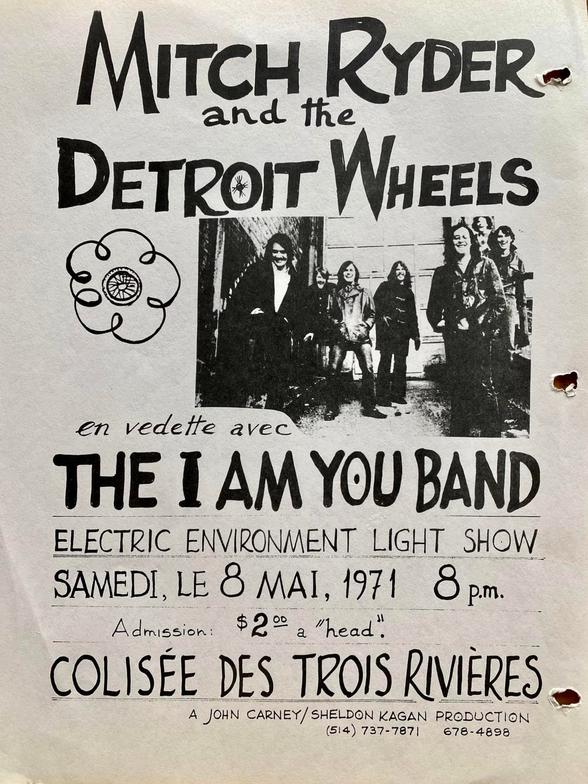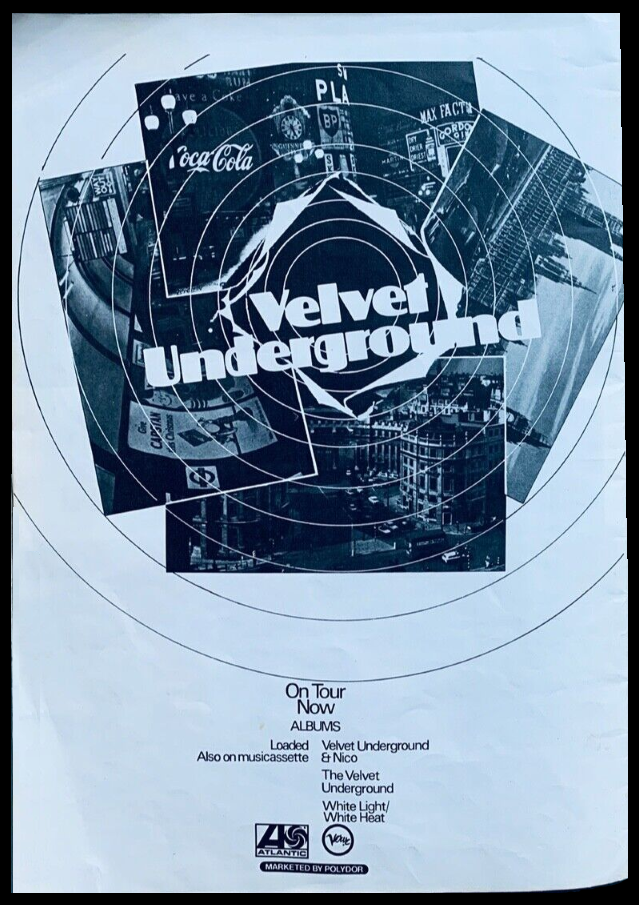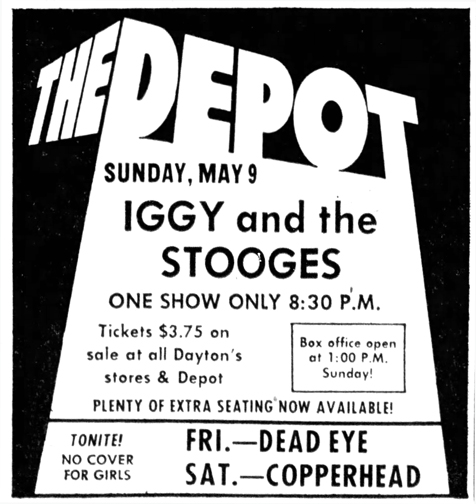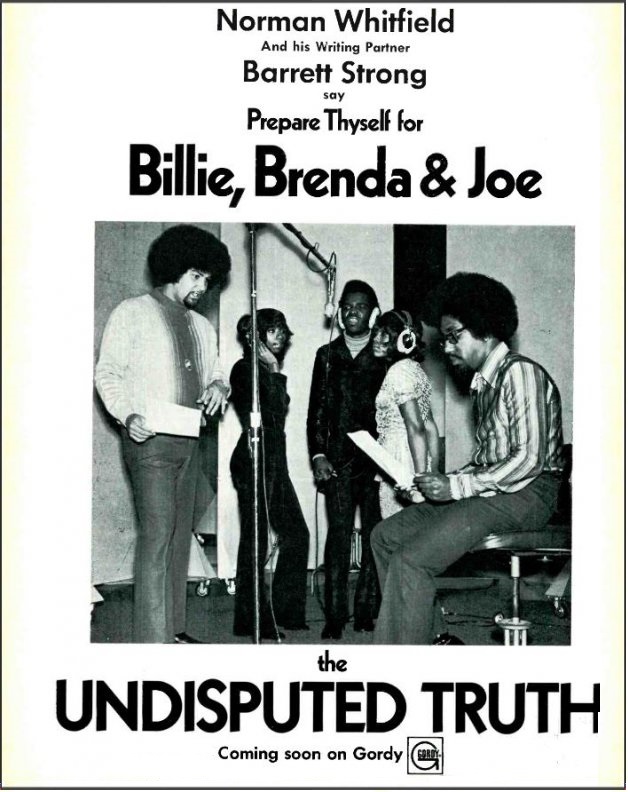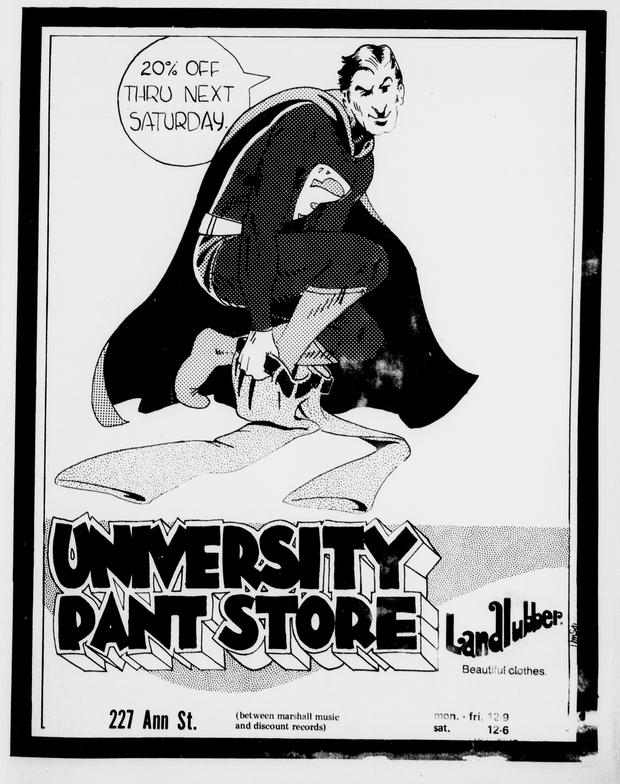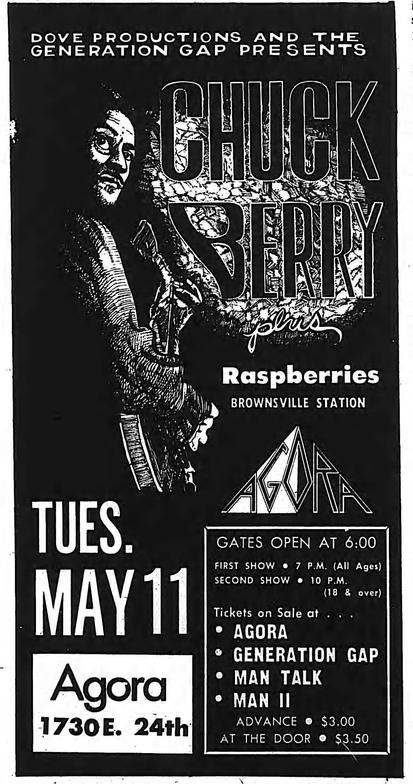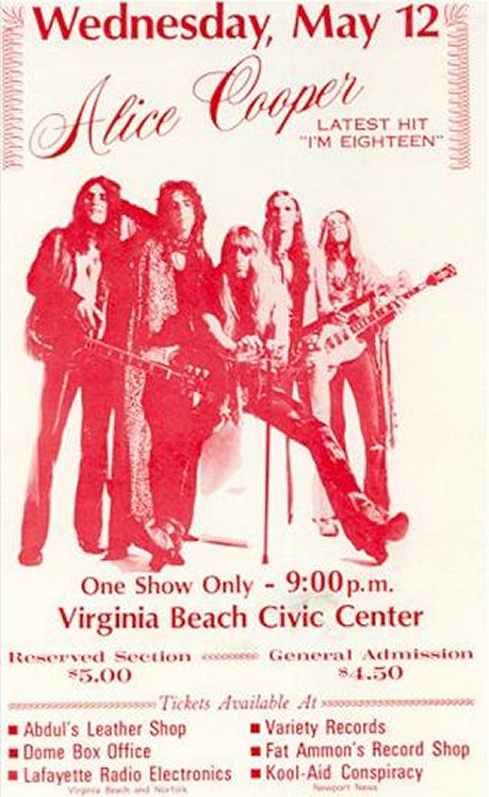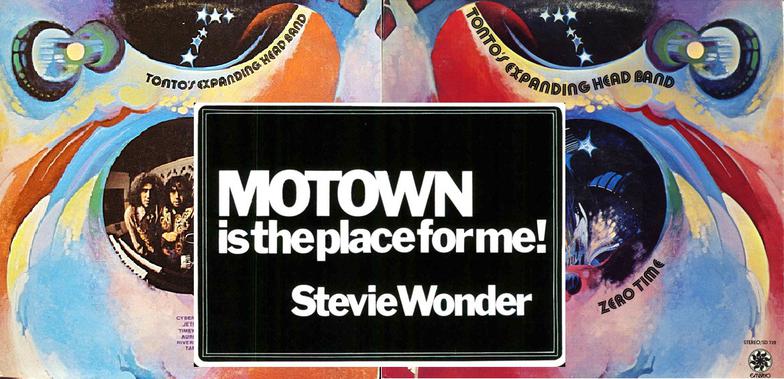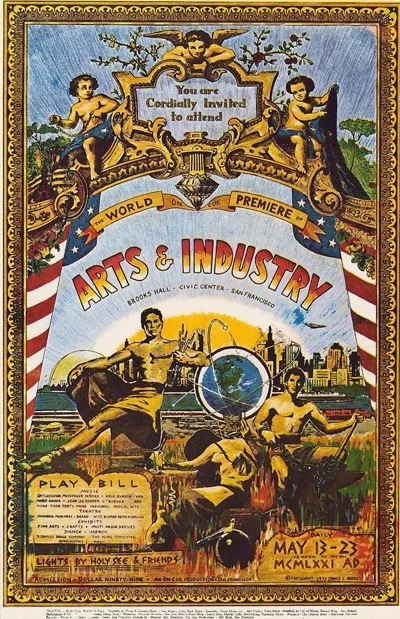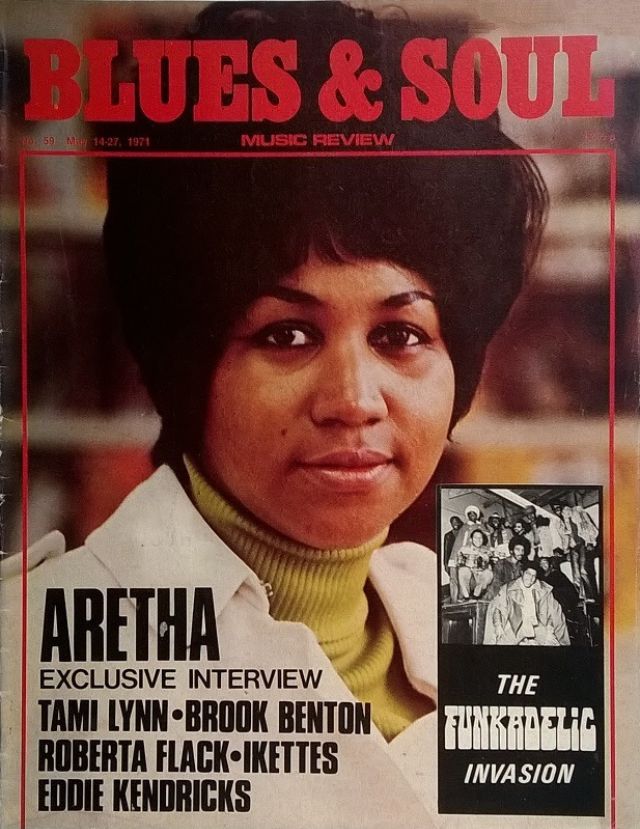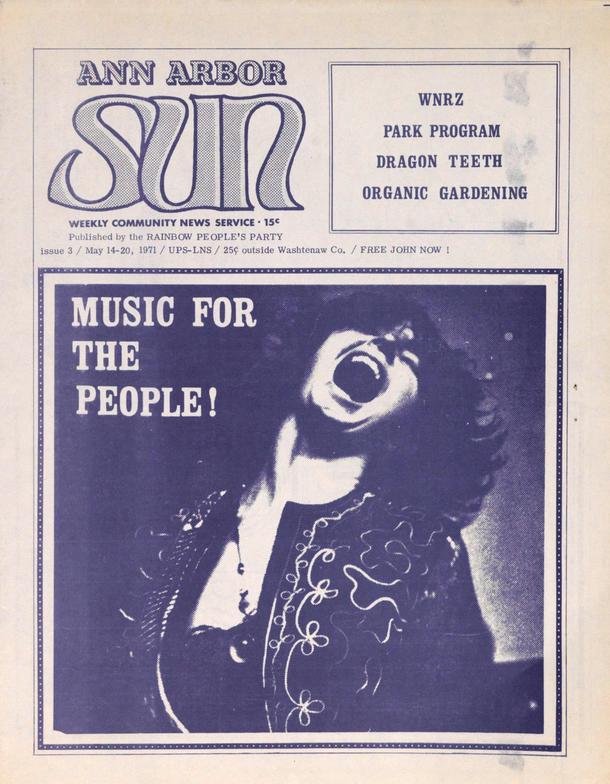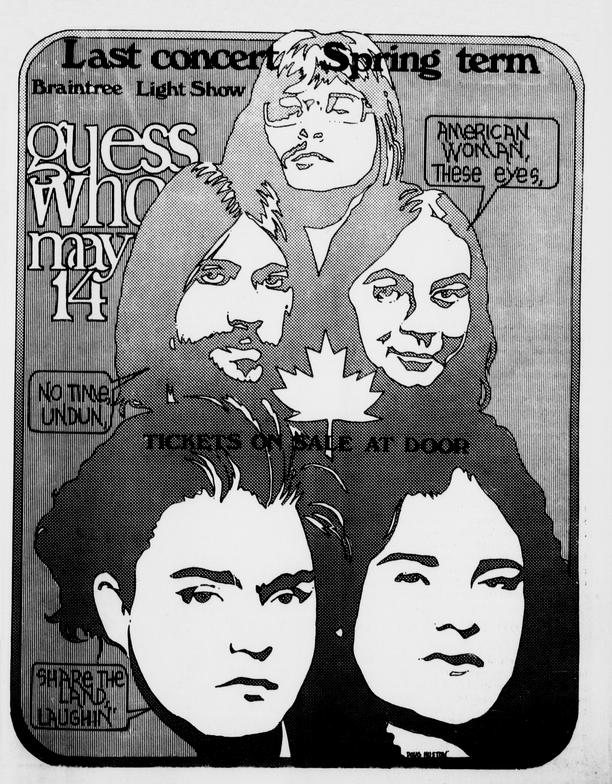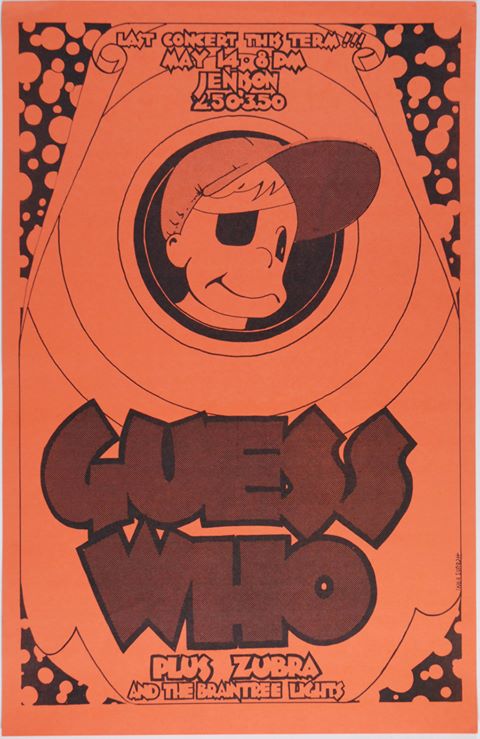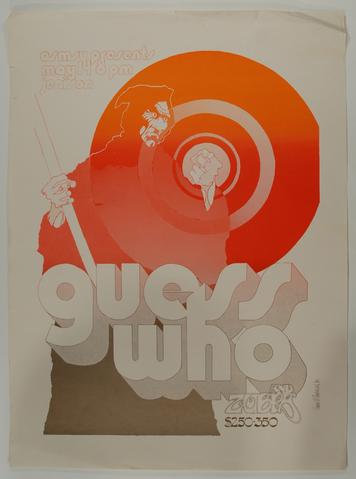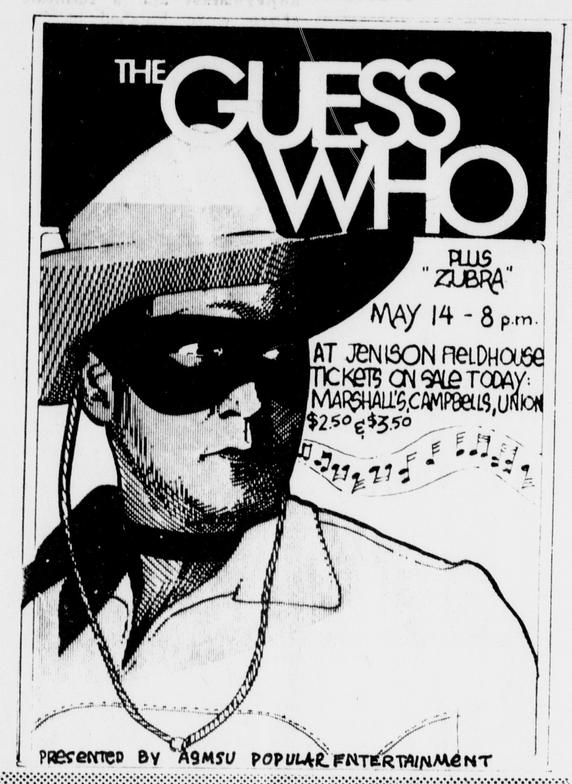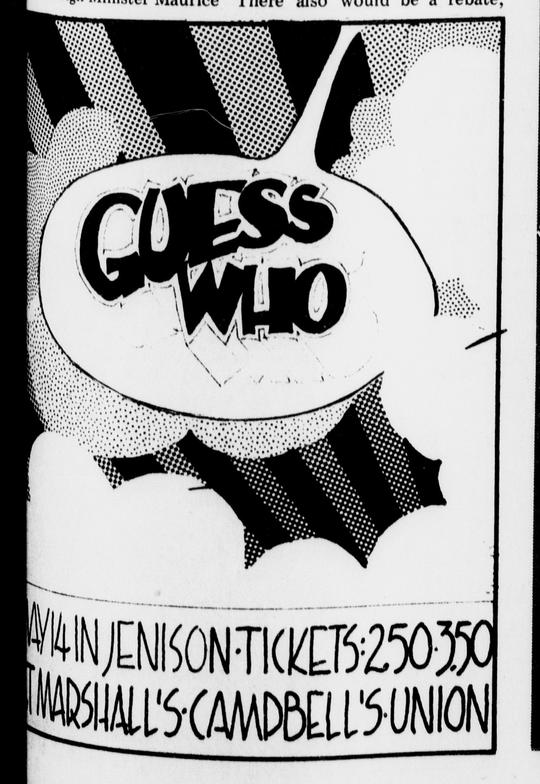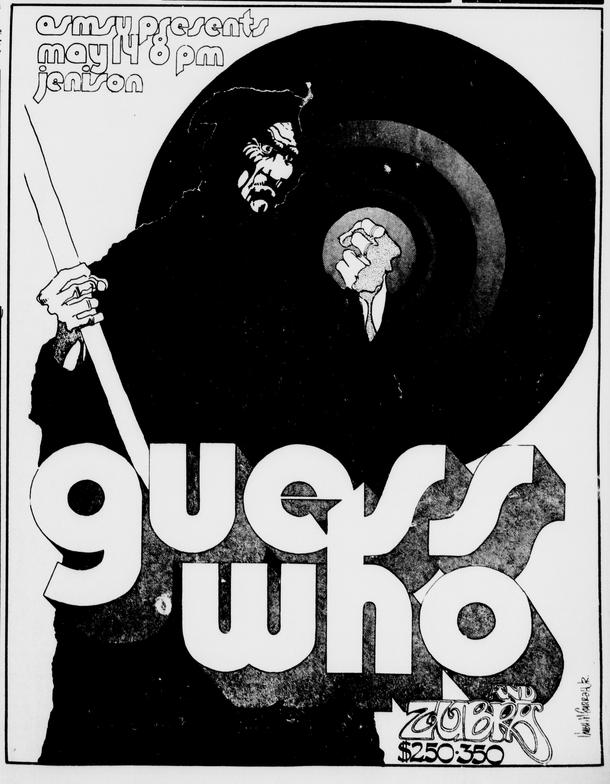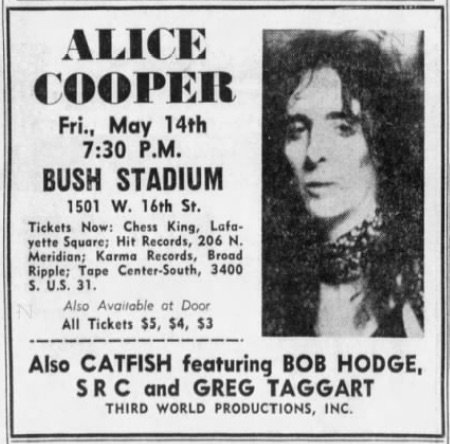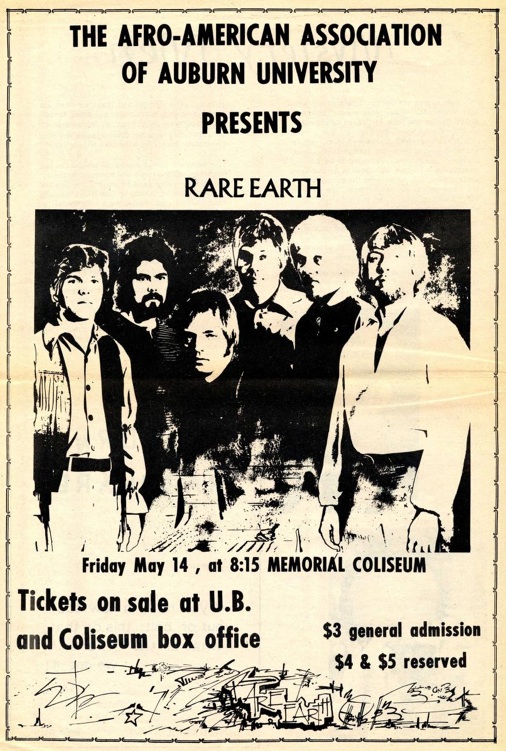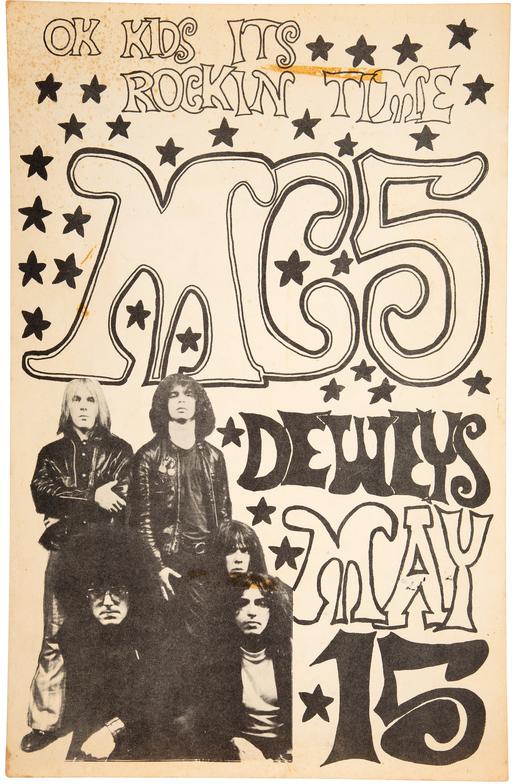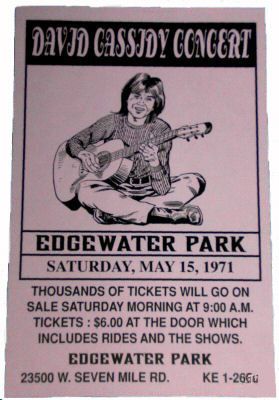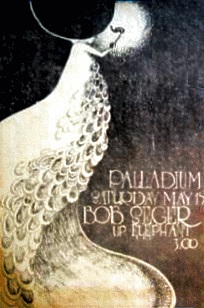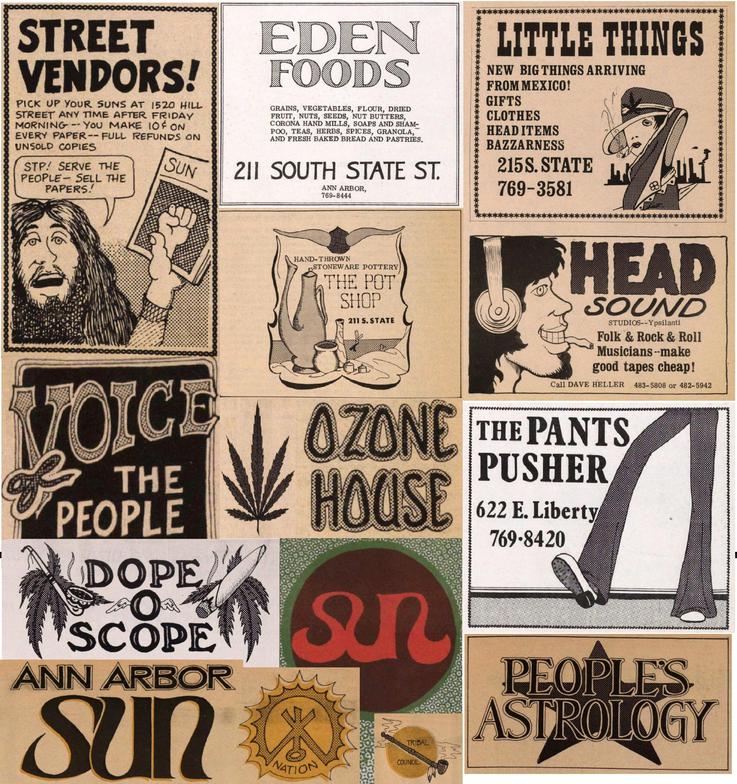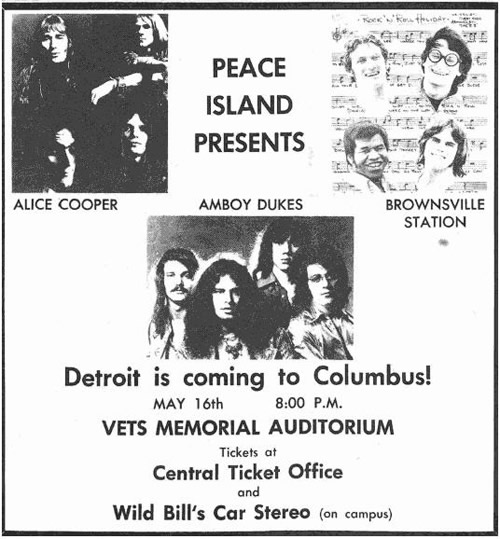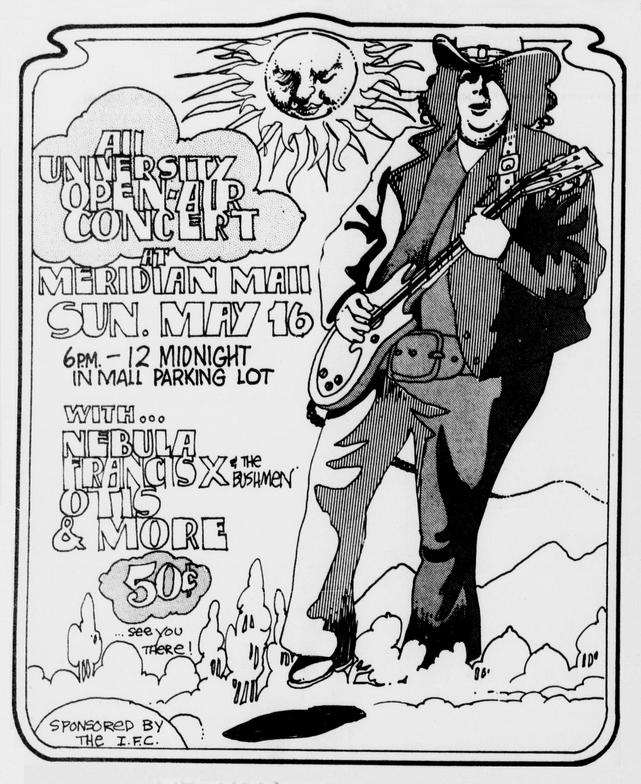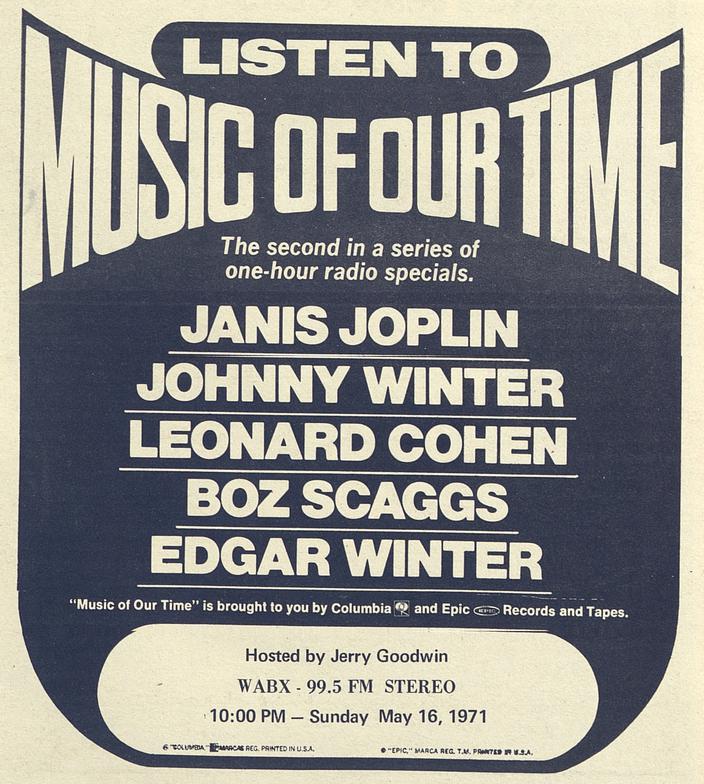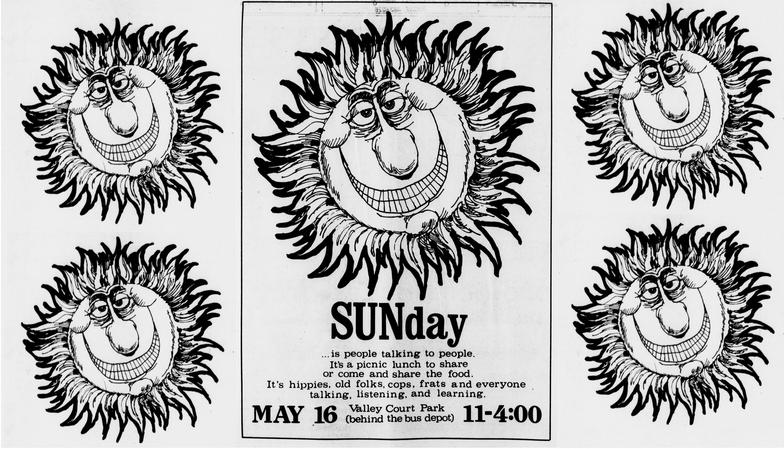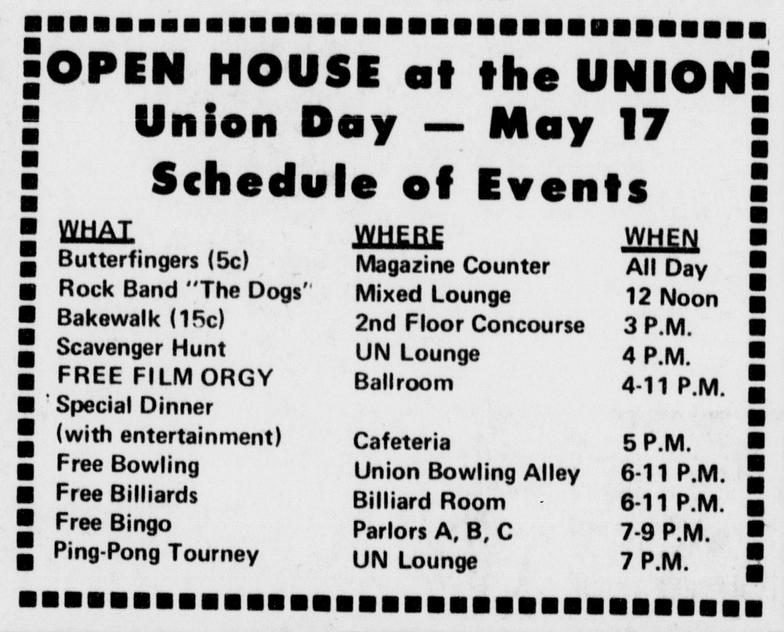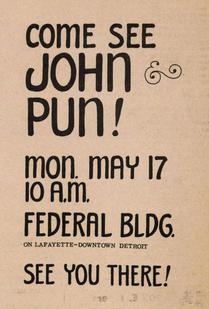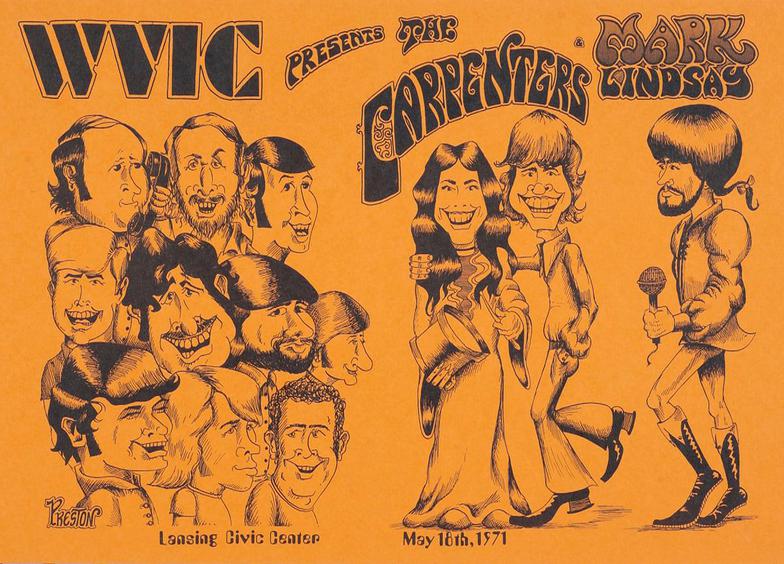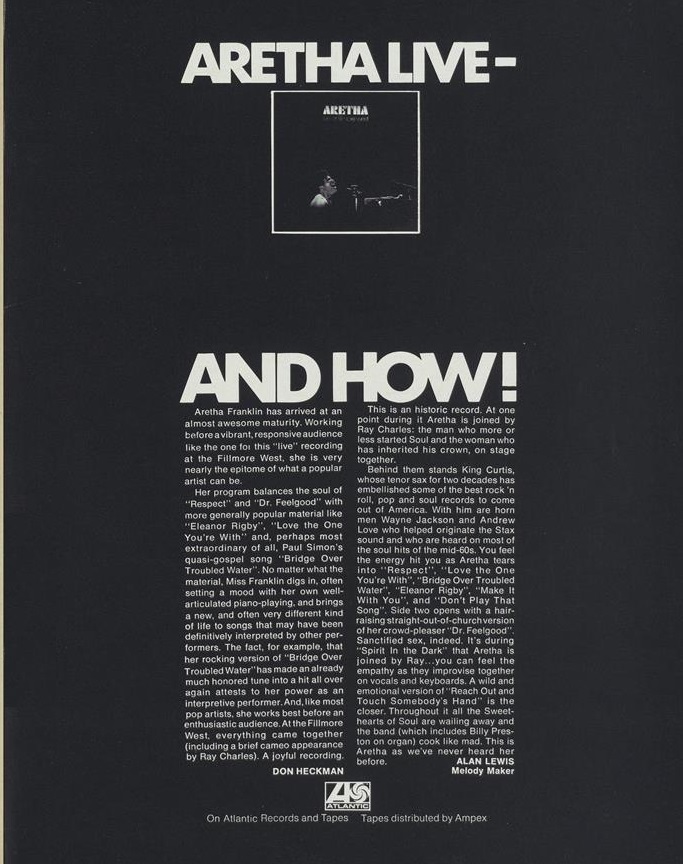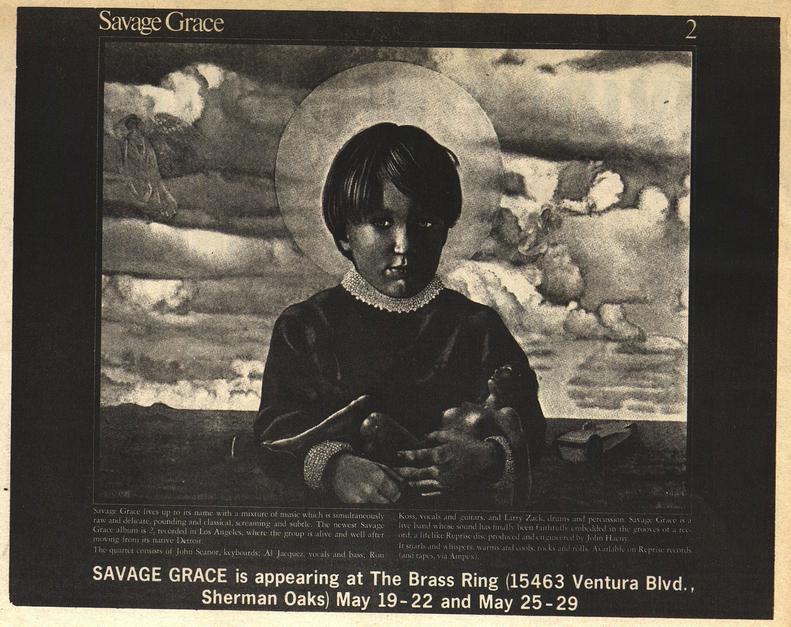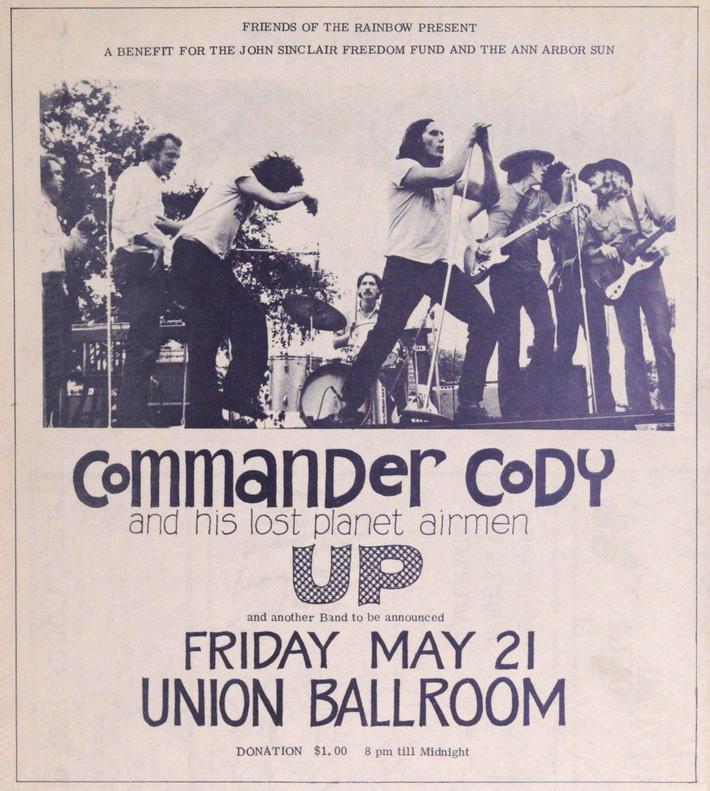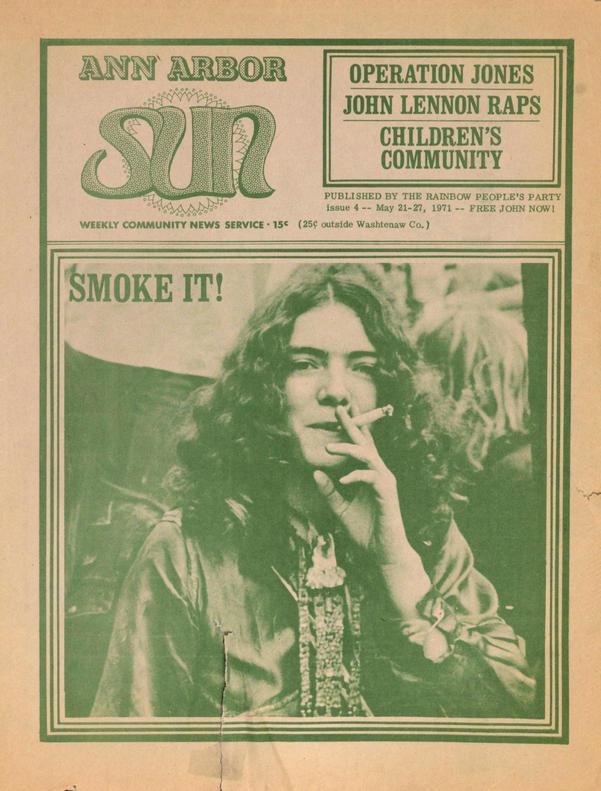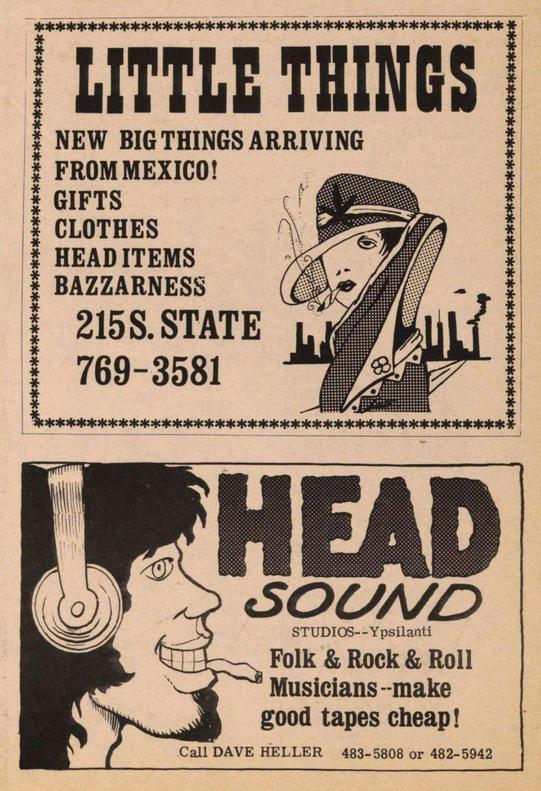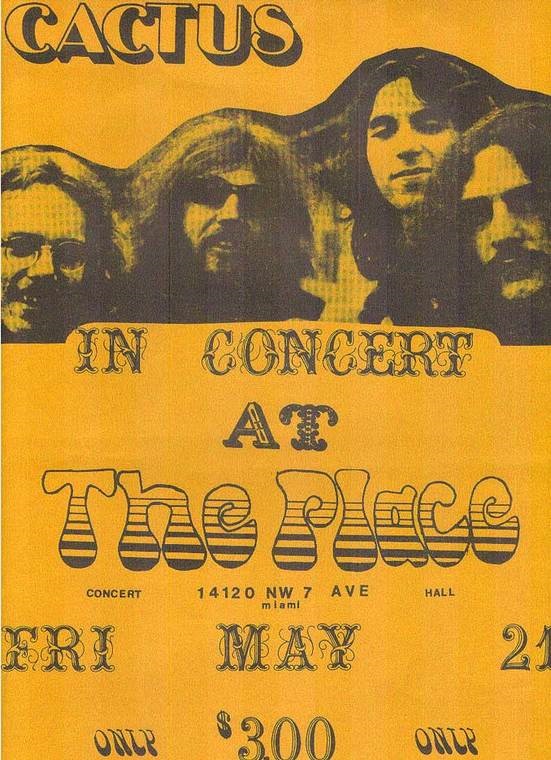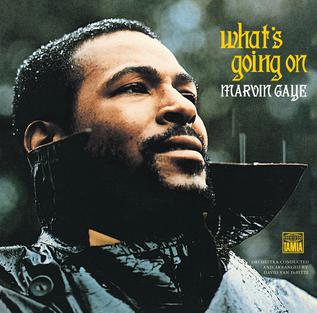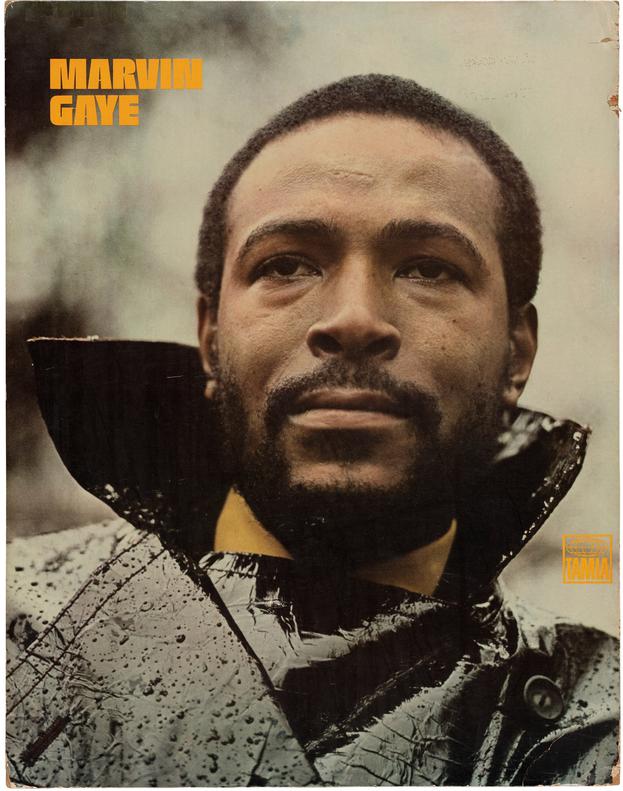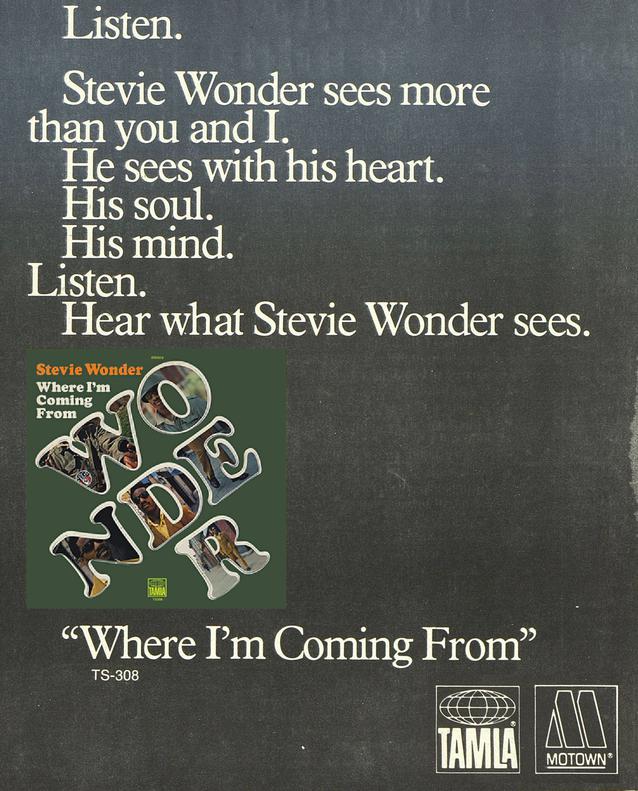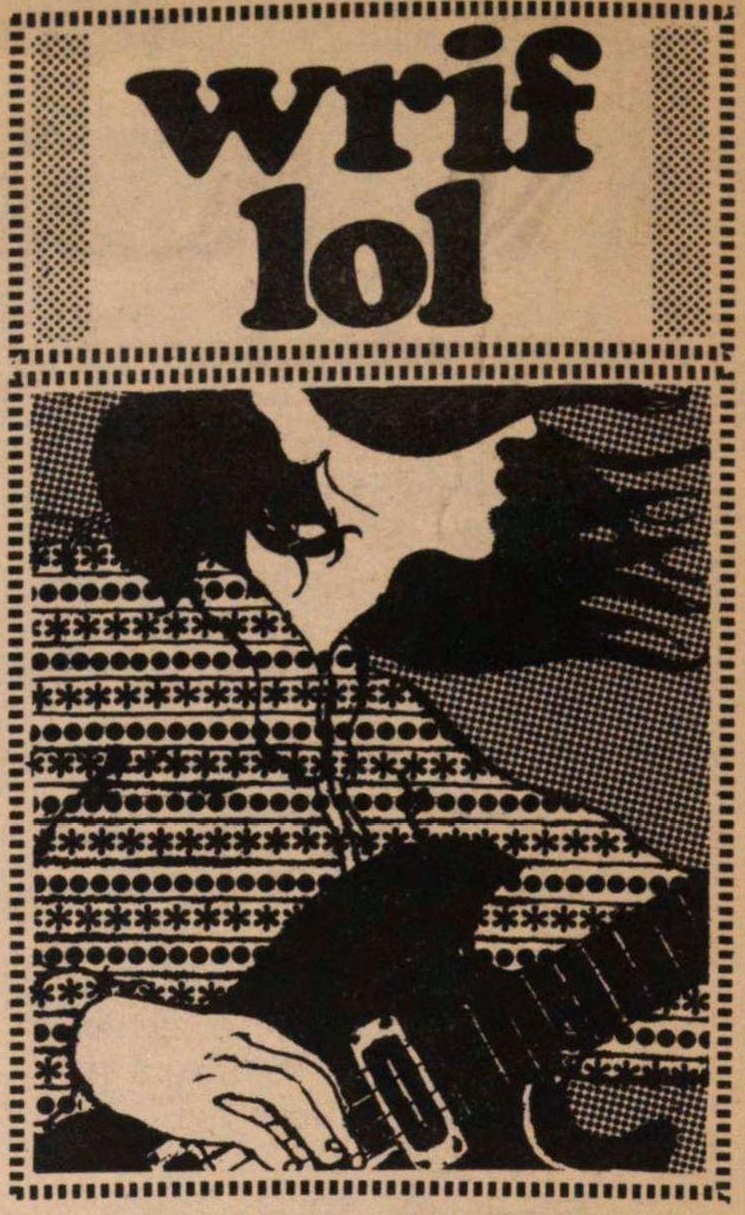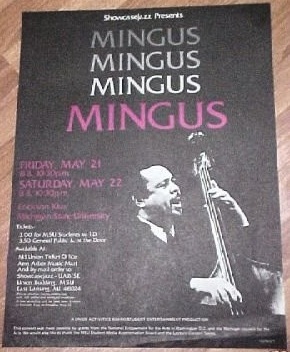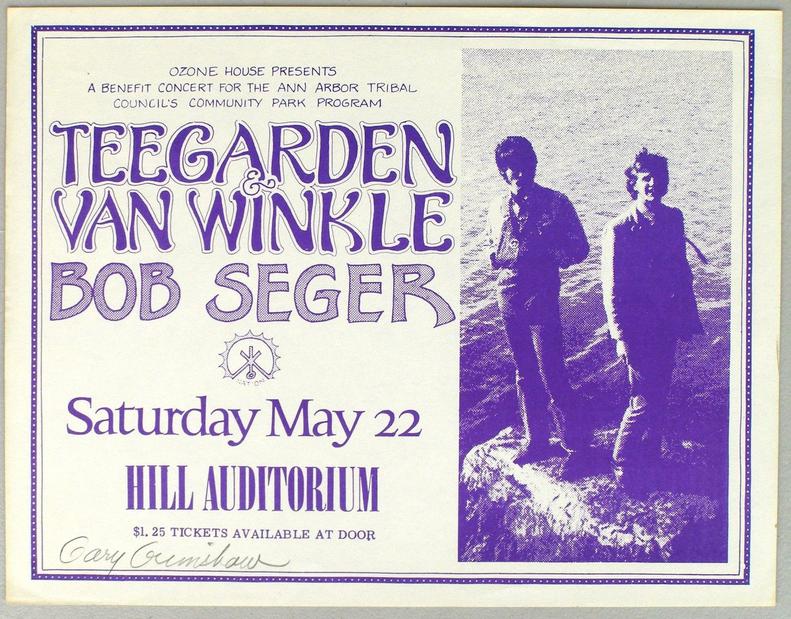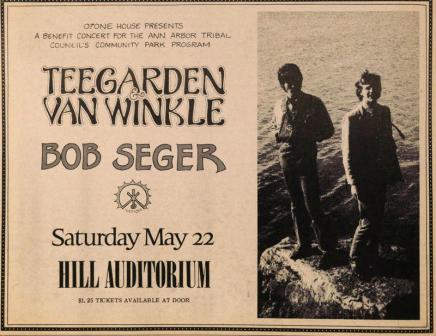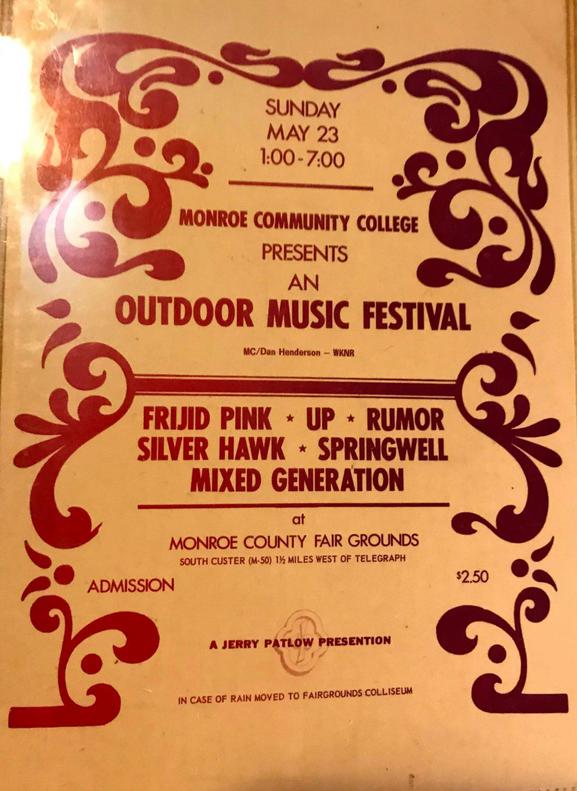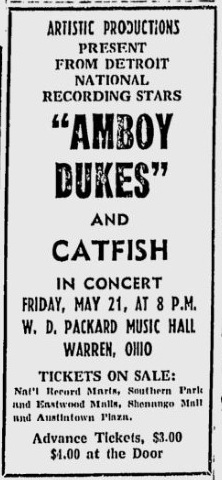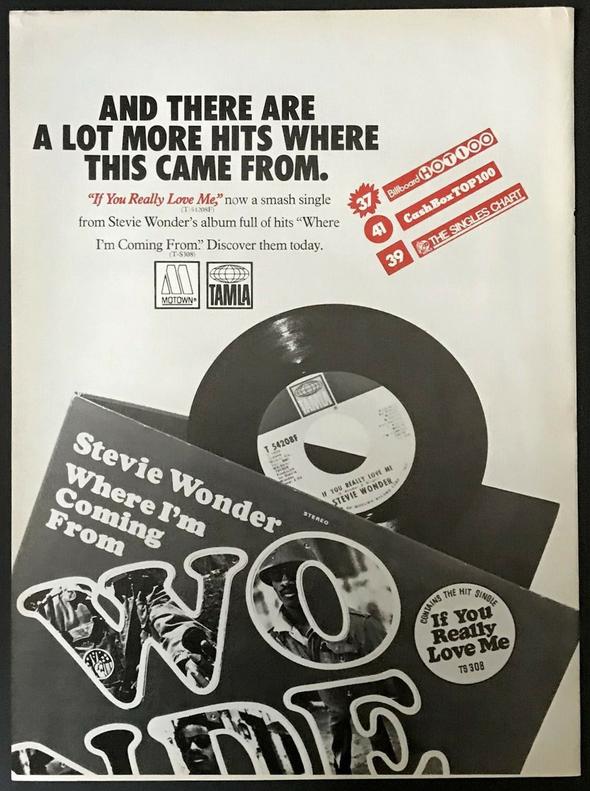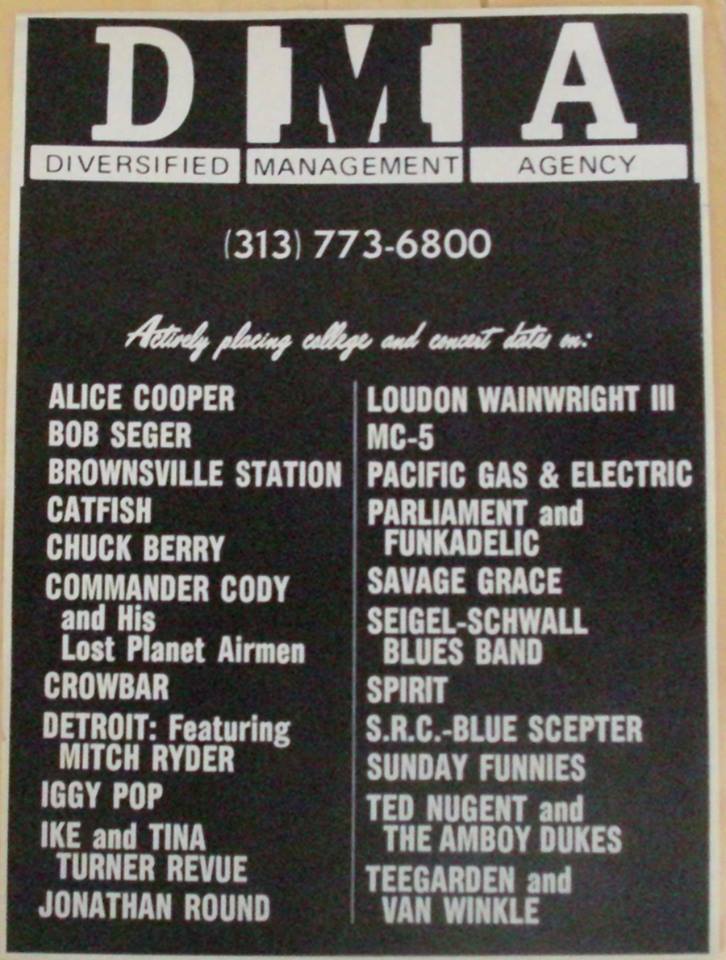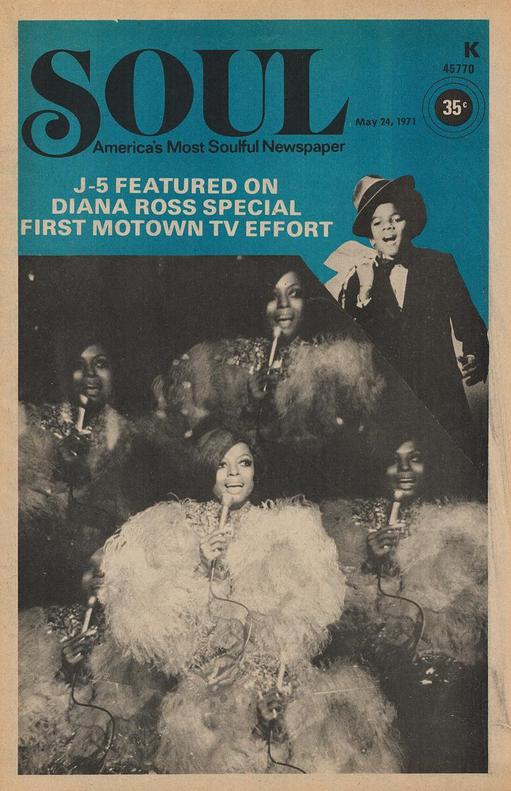Splatt Gallery
Double click here to add text.
Splatt Gallery's History of Michigan Concert Posters
Volume Seven - 1971 - Page Eight
***********************************************************
Back cover illustration, by an unknown artist, for the May 7, 1971 issue of the Ann Arbor SUN newspaper. With only its second issue since being re-started by the Rainbow People’s Party, it was back on the top of the best publications in the country, more local and current (being weekly) than CREEM, with nearly half of its average sixteen pages devoted to music and the arts, and once again, loaded with Gary Grimshaw art. The other key was the addition of photographer David Fenton and contributor Joe Triboni (whom we’re pretty sure is the same person who later opened Joe’s Star Lounge (formerly the Star Bar) in Ann Arbor in the 1980’s).
An excellent contemporary history of the Ann Arbor free concerts, going all the way back to 1966 (!), you should upload and expand to full size to read. Photographs by Leni Sinclair and Stan Livingston. Highly informative and recommended.
Poster by an unknown artist for the Stooges at Saginaw Auditorium in Saginaw, Michigan, May 7, 1971. Also playing were SRC and a “special killer group”. Not found in any database, so it may not have happened. Upcoming shows by the Stooges would be a string of cancellations and mishaps.
Poster for Mitch Ryder & the Detroit Wheels (sic) (actually the band Detroit) in Montreal, Quebec, Canada on May 8, 1971.
A 1971 Verve Records ad for the Velvet Underground “On Tour Now”, which could have applied to any of three Michigan shows, with the band appearing at the Birmingham Palladium on May 8, 1971, and at the Vanity Ballroom in Detroit on June 18th and September 3rd.
Nice stylish logo for The Depot in Minneapolis, Minnesota where Iggy & the Stooges performed on May 9, 1971. Since the Labor Temple had ended, The Depot was the main rock club in the Twin Cities, but since they served liquor, there was an age restriction. Smaller clubs in Minneapolis at the time were the Prison, Barn, and New York City Opera House. Indianapolis had a club called Middle Earth that was similar to the Scene in Milwaukee in that they had weekly shows. Chicago had the Aragon, while Detroit had the Eastown and the Palladium.
An article in a November 1970 issue of Billboard magazine provided the above state-of-the-clubs in the Midwest in an article called “Midwest Report – Ho Hum Attitude”, the attitude being that of the major record labels. They stated that only one major, Mercury, was located in the Midwest, they described Motown as all but packed up and gone off to LA, and that Chess Records had moved most of its staff out of Chicago to out on the East Coast.
It described how Midwest bands could not get a decent record contract unless they went to one of the coasts, and how the area clubs struggled to get included on the majors’ touring circuits.
This promo poster for the Undisputed Truth gives us a nice photo of the Motown production/songwriting team of Norman Whitfield and Barrett Strong (in the foreground). After the departure of Holland-Dozier-Holland, Whitfield and Strong assumed the hit-making role for Motown and introduced the “Psychedelic Soul” sound, particularly in the recent records by the Temptations.
Some Temptations fans, in fact, were dismayed by the group’s new sound, and criticized Whitfield for using the group as a “personal plaything”, so he assembled the group Undisputed Truth, joining Billie Calvin and Brenda Evans from the Delicates with Joe Harris, who had been a bandmate of Mitch Ryder, then known as Billy Levise, way back in 1962, in the Fabulous Peps.
It was common for Whitfield to re-record dramatically different versions of previously released songs by a different group, he took Smokey Robinson’s & the Miracles song “I Heard it Through the Grapevine” and revamped it for both Gladys Knight & the Pips and for Marvin Gaye, and he re-recorded the Temptations’ “War” for Edwin Starr.
Nearly all of the hits by Undisputed Truth were re-arranged versions of Temptations’ songs, including “Save My Love for a Rainy Day”, “You Make Your Own Heaven and Hell Right Here on Earth”, “Papa was a Rolling Stone” (actually, first recorded by Undisputed Truth and then re-arranged into the hit by the Temps), “Ball of Confusion”, and this one, Undisputed Truth’s biggest hit, released on May 13, 1971, called “Smiling Faces Sometimes”.
Here, for comparison, are both versions:
Undisputed Truth – Smiling Faces Sometimes (9171)
https://www.youtube.com/watch?v=8CJZcVi5BA4
Temptations – Smiling Faces Sometimes (1971)
https://www.youtube.com/watch?v=Az_A0-AwdEQ
Ad for the University Pant Store in East Lansing, Michigan by poster artist Hugh Surratt, from the May 11, 1971 issue of the State News newspaper.
A poster/ad for Chuck Berry at the Agora Theatre in Cleveland, Ohio on May 11, 1971. No telling if the Woolies were his backing band for this show, but Michigan’s Brownsville Station is on the bill, along with the newly-formed Cleveland band, the Raspberries.
An ad for Alice Cooper in Virginia Beach, Virginia on May 12, 1971.
On May 13, 1971, Stevie Wonder turned twenty-one years old, releasing him from his Motown contract. The company didn’t let that go on too long, as by July the trade magazines were running the bold ads, “Motown is the place for me!” after Wonder was awarded a higher royalty rate in a 120-page contract that set a new precedent at Motown.
During the brief period that Wonder was out of a job, he had discovered Tonto’s Expanding Headband, a British-American electronic music duo who had created TONTO, “The Original New Timbral Orchestra”, the first, and still the largest, multitimbral polyphonic analog synthesizer in the world (think of a space capsule with keyboards, the surrounding walls a maze of cables, dials, switches and screens, twenty feet in diameter and six feet tall).
Many musicians availed themselves of the TONTO and the production services of Malcolm Cecil and Robert Margouleff, but none more so than Stevie Wonder, using the instrument to record his next four albums, “Music of My Mind”, “Talking Book”, “Innervisions”, and “Fulfillingness’ First Finale”.
Tonto’s Expanding Headband also released two albums of original compositions, “Zero Time” in 1971 and “It’s About Time” in 1974. The complete “Zero Time” album can be heard in the links below, along with a four-minute documentary of the duo’s collaborations with Wonder, including a cameo appearance by Bootsy Collins.
Tonto’s Expanding Headband – Zero Time (album) (1971)
https://www.youtube.com/watch?v=E5tWBBcRYdM
TONTO & Stevie Wonder Documentary
https://www.youtube.com/watch?v=wuaSzFf7yq0
A masterful poster by James L. Barry for “Arts & Industry”, a ten-day event, May 13-23, 1971 in San Francisco, California featuring performances by John Lee Hooker, Quicksilver Messenger Service, Moby Grape, Buddha, and Eric Burdon & War.
Aretha Franklin, and “The Funkadelic Invasion”, on the cover of the May 14, 1971 issue of the British music magazine Blues & Soul.
The front cover of the May 14, 1971 issue of the Ann Arbor SUN newspaper, with photo by David Fenton.
Poster/ad by Doug Huston, for the Jenison Fieldhouse in East Lansing, Michigan, May 14, 1971. It was the second Michigan appearance for the Canadian band, The Guess Who, the first one was at Meadow Brook in Rochester Hills, in August 1970, two months after Randy Bachman had left the band.
The Guess Who – Albert Flasher (1971)
https://www.youtube.com/watch?v=w0u38gQPnfc
Poster by Hugh Surratt for the Guess Who at the Jenison Fieldhouse in East Lansing, Michigan, May 14, 1971, with opening band Zubra.
A second poster, and newspaper ad version, by Hugh Surratt for the Guess Who at the Jenison Fieldhouse in East Lansing, Michigan, May 14, 1971, with opening band Zubra.
Two more poster/ads by Hugh Surratt for the Guess Who at the Jenison Fieldhouse in East Lansing, Michigan, May 14, 1971.
An ad for Alice Cooper with Catfish and SRC at Bush Stadium in Indianapolis, Indiana on May 14, 1971.
Poster for Rare Earth in Auburn, Alabama on May 14, 1971, presented by the Afro-American Association of Auburn University
Poster by an unknown artist for the MC5 at Dewey’s in Madison, Wisconsin on May 15, 1971.
Poster by an unknown artist for David Cassidy’s first Michigan appearance, at Edgewater Park in Detroit, May 15, 1971.
Hauntingly beautiful poster for Bob Seger at the Palladium in Birmingham, Michigan, May 15, 1971 by an unknown artist. Also appearing were the UP and Elephant.
Having disbanded the Bob Seger System, Seger was attempting a solo career, releasing the album “Brand New Morning” accompanying himself on piano and guitar. Check out this almost unrecognizable photo that was used as the album cover in the link to the song below:
Bob Seger – Railroad Days (1971)
https://www.youtube.com/watch?v=px9DYEVaMOg
With the Ann Arbor SUN newspaper back in regular production, we were treated again to Gary Grimshaw’s artwork with advertisements, column headings and logos.
Thanks to Dave Leone’s Diversified Management Agency, “Detroit” was becoming known around the country as Alice Cooper + Amboy Dukes + Brownsville Station. The Motor City “Three” in Columbus, Ohio, May 16, 1971.
Poster/ad by Hugh Surratt for an All University Open Air Concert at the Meridian Mall in Lansing, Michigan, May 16, 1971, with Nebula, Francis X and the Bushmen, Otis, “and more”. It looks like he used a design for an upcoming Mountain poster, who would come to town exactly two months later.
Eye-catching ad for the “Music Of Our Time” radio program on WABX, May 16, 1971.
The State News newspaper in East Lansing, Michigan, reported “This smiling sun can be seen on posters all over campus to publicize SUNday…” on May 16, 1971.
An Open House at the Union at Michigan State University in East Lansing, Michigan, May 17, 1971, that featured five-cent Butterfingers candy bars all day long and an appearance by The Dogs rock band at high noon.
John Sinclair and Pun Plamondon were both brought to the Federal Building in Detroit for a pre-trail hearing in the CIA Conspiracy Trial, May 17, 1971. The trial had taken a side-turn into a battle over unwarranted wiretapping, and the pair’s main lawyer, Buck Davis, had been joined by high-profile defense attorneys Lenny Weinglass and Bill Kunstler, “to destroy any remaining government oinkings”.
Poster/flyer by Dennis Preston for the Carpenters with Mark Lindsay at the Civic Center in Lansing, Michigan on May 18, 1971.
A full-page Atlantic Records ad for Aretha Franklin’s third live album “Aretha Live at Fillmore West”, released on May 19, 1971. Recorded over three nights in March 1971, the album was #1 on the R&B Albums chart for five weeks, ultimately knocked out the top spot by Marvin Gaye’s “What’s Going On.”
An ad for Savage Grace’s second album, with a listing of their appearances at The Brass Ring in Sherman Oaks, California, May 19-22, 1971 and May 25-29, 1971. The record company’s ad copy, which as one of our readers pointed out is a lost art, reads in part, “Savage Grace lives up to its name with a mixture of music which is simultaneously raw and delicate, pounding and classical, screaming and subtle. The newest Savage Grace album is 2, recorded in Los Angeles, where the group is alive and well after moving from its native Detroit. It snarls and whispers, warms and cools, rocks and rolls.”
Savage Grace – Savage Grace 2 (album) (1971)
https://www.youtube.com/watch?v=Spy6wETsjhA
Gary Grimshaw poster with photo by Leni Sinclair for the Union Ballroom in Ann Arbor, Michigan, May 21, 1971. Carnal Kitchen was the “another Band to be announced”. Getting yet more mileage out of the Leni Sinclair photograph of Commander Cody & his Lost Planet Airmen. Also on the bill were the UP.
The front cover of the May 21, 1971 issue of the Ann Arbor SUN newspaper, with photo by David Fenton.
A Gary Grimshaw ad for Head Sound studios in Ypsilanti, Michigan from the May 21, 1971 issue of the Ann Arbor Sun newspaper, and we believe the ad above it, for the Little Things store, may also be Grimshaw’s illustration.
The ads appeared on the same page as a free want ad that read, “SRC is selling the following components and equipment…”, listing an electric piano, a Les Paul Custom guitar, a Framus “Star” bass guitar, an Altec mixer, a Rogers Holiday drum kit, Marshall amplifiers, assorted drivers and microphones, all told over $5,500 worth.
Poster/flyer for Cactus in Miami, Florida on May 21, 1971.
Marvin Gaye released his “What’s Going On” album on May 21, 1971, a couple of months late per the agreement with Berry Gordy, but Gordy had to be pleased, as three singles from the album reached #1 on the Billboard R&B chart.
A Tamla Records poster of Marvin Gaye from the same backyard photo shoot as the front cover of his “What’s Going On” album, released on May 21, 1971,
Overshadowed by Marvin Gaye’s landmark album “What’s Going On”, which was released at the same time, Stevie Wonder released his 13th studio album on Motown Records. A transitional album, as Wonder turned twenty-one years old; releasing him from his original contract with Motown, newly married to his song-writing partner Syreeta Wright, developing his experimentation with the clavinet, this would be his last album backed by the Funk Brothers, as he would begin playing nearly all of the instruments himself on future albums.
Stevie Wonder – If You Really Love Me (1971)
https://www.youtube.com/watch?v=6z5-nAzBvrk
Illustration for the newly-christened WRIF radio station from the May 21, 1971 issue of the Ann Arbor SUN newspaper, possibly by Gary Grimshaw.
Poster by an unknown artist for Charles Mingus at Michigan State University in East Lansing, Michigan, May 21-22, 1971.
Gary Grimshaw poster for Teegarden & Van Winkle with Bob Seger, at Hill Auditorium in Ann Arbor, Michigan, May 22, 1971.
Newsprint version of Gary Grimshaw’s poster for Teegarden & Van Winkle with Bob Seger, at Hill Auditorium in Ann Arbor, Michigan, May 22, 1971.
Free concert behind the bus station in East Lansing, Michigan, May 23, 1971 with the UP and the Dogs.
A poster for an Outdoor Music Festival in Monroe, Michigan on May 23, 1971, produced by Jerry Patlow and featuring Frijid Pink, UP, Rumor, Silver Hawk, Springwell, and Mixed Generation.
Newspaper ad with John Lee Hooker in Atlanta, Georgia on May 16, 1971.
Newspaper ad for the Amboy Dukes and Catfish, “Detroit national recording stars”, in Warren, Ohio on May 21, 1971.
An ad for Dave Leone’s Diversified Management Agency in May 1971.
The Diana Ross TV special, introducing the Jackson 5, on the cover of the May 24, 1971 issue of SOUL magazine.
Volume Seven - 1971 - continues - HERE


